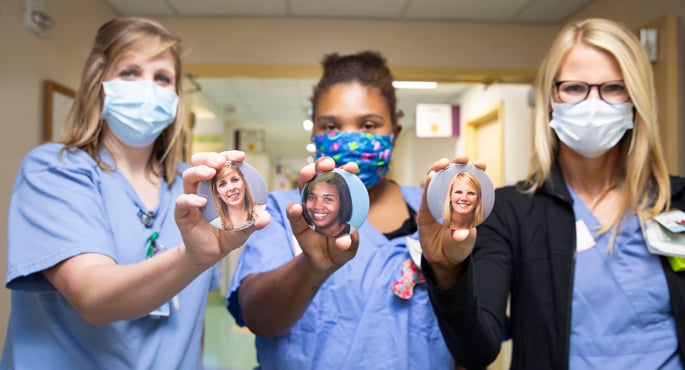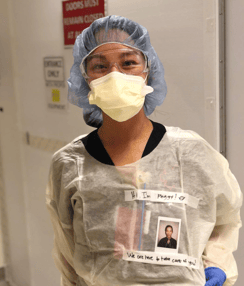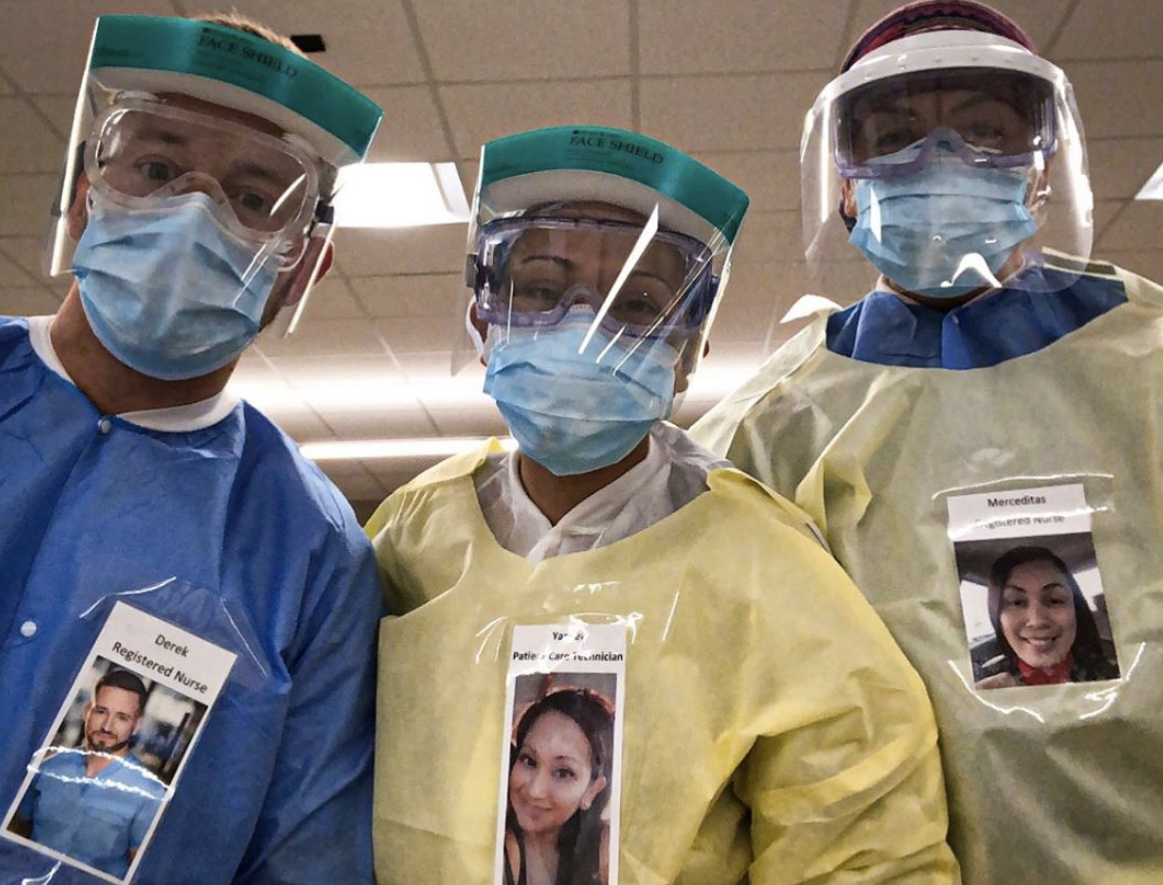The holiday season is all about connection, joy, and community; and hospitals find some of the most creative, heartfelt ways to spread that spirit even when patients can’t be home. From festive events to comforting decorations and meaningful moments that bring smiles to faces young and old, here’s a roundup of inspiring hospital holiday traditions that spotlight compassion and joy.
🎶 Holiday Concerts That Heal
UCSF Benioff Children’s Hospital & San Francisco Symphony
Each year, the San Francisco Symphony hosts a special holiday concert for children who’ve been in care — inviting recently discharged patients and their families to a magical performance featuring classic pieces and fun activities like instrument “petting zoos” and sing-alongs.
Symphony gifts kids in care of UCSF Children’s Hospital with ‘magic of music
This thoughtful tradition uses music to celebrate resilience and bring families together beyond clinical walls.
🌟 Festival-Style Community Celebrations
Decatur County Memorial Hospital Holiday Lane
Decatur County Memorial Hospital kicks off the season with a festive Holiday Lane celebration on its walking trail. With seasonal treats, photos with Santa and reindeer, twinkling displays, and a cozy hot chocolate bar, this event brings patients, staff, and community members together for shared joy.
Decatur County Memorial Hospital Holiday Lane event
It’s a beautiful reminder that community and connection are core to healing and celebration alike.
🌲 Trees and Menorahs for Every Patient
Gaylord Hospital’s Mini Holiday Trees & Menorahs
At Gaylord Hospital in Wallingford, patients spend the holidays surrounded by festive cheer through the distribution of mini Christmas trees and menorahs — a tradition started by a former patient who wanted others to feel the warmth of the season.
Gaylord Hospital celebrates holidays with trees & menorahs for patient
This simple, thoughtful act helps brighten rooms and lift spirits during difficult stays.
🎄 Bring the Holidays To the Hospital — A Christmas Tree Farm
Texas Children’s Hospital Christmas Tree Farm
What if hospitalized kids could pick their own Christmas tree? Texas Children’s Hospital makes that happen with an on-site “Christmas Tree Farm,” where patients choose a special tree to decorate their room — turning a clinical setting into a winter wonderland.
Texas Children’s opens Christmas Tree Farm for patient
It’s a wonderfully immersive way to weave holiday magic into the hospital experience.
🤝 Intergenerational Visits and Carolers
While not hospital-specific, intergenerational holiday visits, like children singing carols with hospital patients, have a powerful emotional impact. SSM Health St. Mary's Hospital faculty gather with their children and grandchildren to sing and make the hospital halls merry and bright.
Angels in ICU during annual St. Mary’s Hospital tradition
These moments of shared humanity capture what the season is truly about.
🚓 Community Guests Who Spread Cheer
NYPD Annual Visit to Hospitals for Children
In a long-running holiday tradition, NYPD officers bring toys, characters (like Olaf and Paw Patrol), and high-spirited energy to Hospitals, giving kids a joyful experience filled with surprise and delight.
NYPD spreads holiday cheer at Hospitals for Children
It’s community partnership in action, showing how seasonal outreach can make a lasting memory.
✨ Bonus Ideas You Can Borrow
Hospitals across the country get creative in so many other ways, including:
- Holiday cards and bedside decorations: St. Jude Children’s encourages sending festive cards and creating cozy room décor to uplift patients.
-
Crafts, parades, and hospital “holiday stores”: Many children’s hospitals host pop-up stores or light parades so patients can enjoy special activities and pick out gifts safely.
How hospitals support kids during the holidays
Holiday traditions in hospitals are about heart, creating moments of joy, comfort, connection, and community when they’re needed most. Whether it’s a tree to brighten a room, music to lift a spirit, or a shared meal among colleagues, these celebrations remind us that healing is as much about love as it is about medicine.


 As a Nurse, you consider many factors when choosing where you want to work. Safety should be at the top of your list of considerations.
As a Nurse, you consider many factors when choosing where you want to work. Safety should be at the top of your list of considerations. Even before the pandemic, healthcare providers experienced burnout and other negative mental health issues. Now more than ever, it is critical health systems take steps to support their staff's well-being.
Even before the pandemic, healthcare providers experienced burnout and other negative mental health issues. Now more than ever, it is critical health systems take steps to support their staff's well-being. Health care organizations rely on Nurse leaders to manage teams, patient care, and promote organizational goals. In order to meet these goals, a successful Nurse leader must possess certain qualities such as...
Health care organizations rely on Nurse leaders to manage teams, patient care, and promote organizational goals. In order to meet these goals, a successful Nurse leader must possess certain qualities such as...





 Every Nurse I know who works in a hospital, says they are amazed how much walking they do in their 12-hour shift. If you wear a Fitbit or another step tracking device, you know you walk miles during your shift. Here’s a story about a hospital that did a study to see where they could eliminate some steps for Nurses in the design of their new building.
Every Nurse I know who works in a hospital, says they are amazed how much walking they do in their 12-hour shift. If you wear a Fitbit or another step tracking device, you know you walk miles during your shift. Here’s a story about a hospital that did a study to see where they could eliminate some steps for Nurses in the design of their new building.
 With her children grown and husband nearing retirement, Amy Reynolds was ready to leave behind snowy Flagstaff, Ariz., to travel but she wasn't ready to give up her nursing career.
With her children grown and husband nearing retirement, Amy Reynolds was ready to leave behind snowy Flagstaff, Ariz., to travel but she wasn't ready to give up her nursing career. If you're in the hospital or a nursing home, the last thing you want to be dealing with is bedbugs. But exterminators saying they're getting more and more calls for bedbug infestations in nursing homes, hospitals and doctor's offices.
If you're in the hospital or a nursing home, the last thing you want to be dealing with is bedbugs. But exterminators saying they're getting more and more calls for bedbug infestations in nursing homes, hospitals and doctor's offices. Stephanie Packer was 29 when she found out she has a terminal lung disease.
Stephanie Packer was 29 when she found out she has a terminal lung disease. Hospital workers wash their hands hundreds of times a day. Nurses are constantly using alcohol gels, chemical wipes and iodine washes on themselves and on patients.
Hospital workers wash their hands hundreds of times a day. Nurses are constantly using alcohol gels, chemical wipes and iodine washes on themselves and on patients.